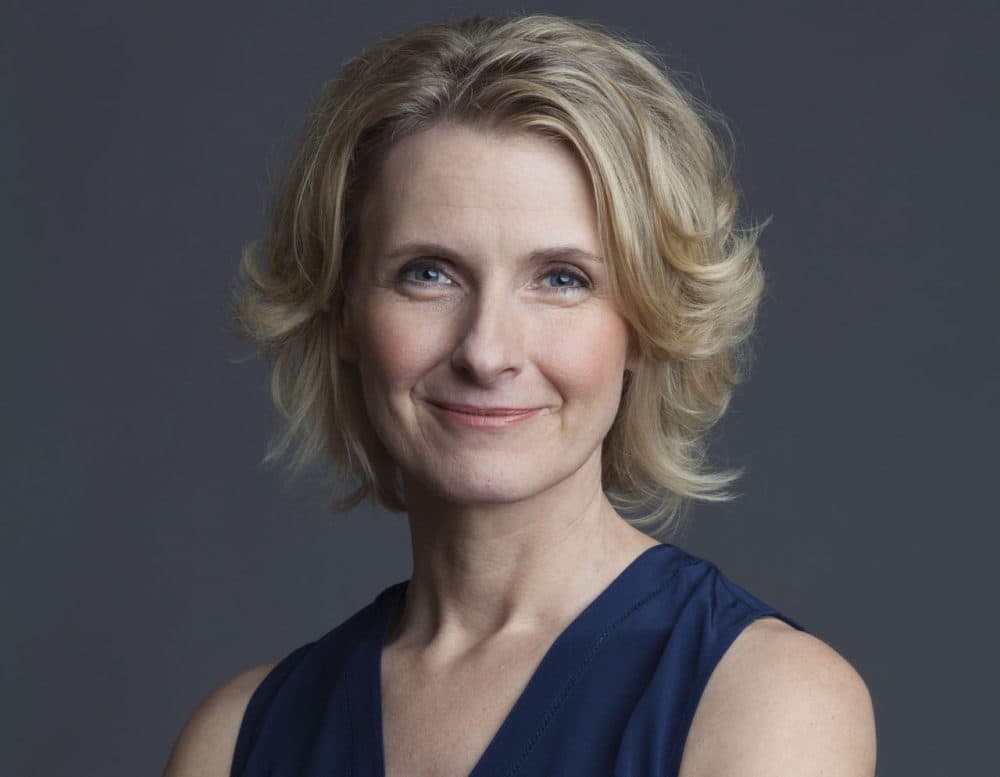Advertisement
Elizabeth Gilbert On Unlocking Creativity, Ideas As Viruses

Elizabeth Gilbert has had a huge success with her books, most notably her memoir "Eat, Pray, Love." But over the years, she's also struggled with finding and developing her inspiration.
She shares those struggles in her new book "Big Magic: Creative Living Beyond Fear," which is part memoir, part how-to for living a life that's less routine and more curiosity-driven. As Gilbert tells Here & Now's Robin Young, she sees an idea as sort of a healthy virus, one that can exist outside the body and can occasionally be transmitted from person-to-person.
In one case, an idea was transmitted from Gilbert to her fellow writer Ann Patchett: "It was exchanged in the kiss and that the idea, which very much wanted to be made realized that Liz Gilbert was not going to get the job done."
Book Excerpt: "Big Magic: Creative Living Beyond Fear"
By Elizabeth Gilbert
Paint Your Ox
For most of human history, then, the vast majority of people have made their art in stolen moments, using scraps of borrowed time — and often using pilfered or discarded materials, to boot. (The Irish poet Patrick Kavanagh says it marvelously: “See over there / A created splendour / Made by one individual / From things residual.”)

I once encountered a man in India who owned nothing of value but an ox. The ox had two handsome horns. In order to celebrate his ox, the man had painted one of the horns hot pink and the other turquoise blue. He then glued little bells to the tips of each horn, so that when the ox shook its head, its flashy pink and blue horns made a cheerful tinkling sound.
This hardworking and financially stressed man had only one valuable possession, but he had embellished it to the max, using whatever materials he could get his hands on—a bit of house paint, a touch of glue, and some bells. As a result of his creativity, he now possessed the most interesting- looking ox in town. For what? Just because. Because a decorated ox is better than a non-decorated ox, obviously! (As evidenced by the fact that - eleven years later - the only animal I can still distinctly remember from my visit to that small Indian village is that fantastically decked-out ox.)
Advertisement
Is this the ideal environment in which to create — having to make art out of “things residual” in stolen time? Not really. Or maybe it’s fine. Maybe it doesn’t matter, because that’s how things have always been made. Most individuals have never had enough time, and they’ve never had enough resources, and they’ve never had enough support or patronage or reward . . . and yet still they persist in creating. They persist because they care. They persist because they are called to be makers, by any means necessary.
Money helps, to be sure. But if money were the only thing people needed in order to live creative lives, then the mega-rich would be the most imaginative, generative, and original thinkers among us, and they simply are not. The essential ingredients for creativity remain exactly the same for everybody: courage, enchantment, permission, persistence, trust—and those elements are universally accessible. Which does not mean that creative living is always easy; it merely means that creative living is always possible.
I once read a heartbreaking letter that Herman Melville wrote to his good friend Nathaniel Hawthorne, complaining that he simply could not find time to work on his book about that whale, because “I am so pulled hither and thither by circumstances.” Melville said that he longed for a big, wide-open stretch of time in which to create (he called it “the calm, the coolness, the silent grass-growing mood in which a man ought always to compose”), but that sort of luxuriousness simply did not exist for him. He was broke, he was stressed, and he could not find the hours to write in peace.
I do not know of any artist (successful or unsuccessful, amateur or pro) who does not long for that kind of time. I do not know of any creative soul who does not dream of calm, cool, grass-growing days in which to work with- out interruption. Somehow, though, nobody ever seems to achieve it. Or if they do achieve it (through a grant, for in- stance, or a friend’s generosity, or an artist’s residency), that idyll is just temporary—and then life will inevitably rush back in. Even the most successful creative people I know complain that they never seem to get all the hours they need in order to engage in dreamy, pressure-free, creative exploration. Reality’s demands are constantly pounding on the door and disturbing them. On some other planet, in some other lifetime, perhaps that sort of peaceful Edenic work environment does exist, but it rarely exists here on earth.
Melville never got that kind of environment, for instance.
But he still somehow managed to write Moby-Dick, anyhow.
Excerpted from the book BIG MAGIC: CREATIVE LIVING BEYOND FEAR by Elizabeth Gilbert. Copyright 2015 by Elizabeth Gilbert. Reprinted with permission of Riverhead Books, an imprint of Penguin Publishing Group, a division of Penguin Random House LLC.
Guest
- Elizabeth Gilbert, author of "Eat, Pray, Love," "Committed," and "The Signature of All Things." Her most recent book is "Big Magic: Creative Living Beyond Fear." She tweets @GilbertLiz.
This segment aired on September 23, 2015.